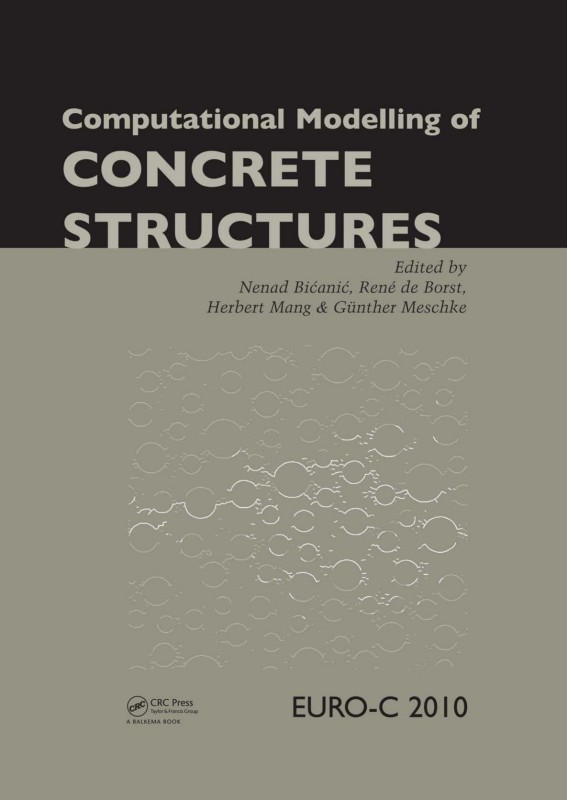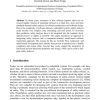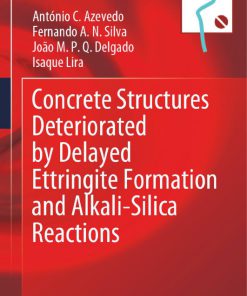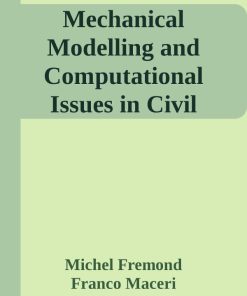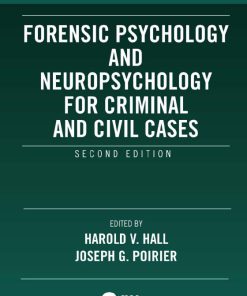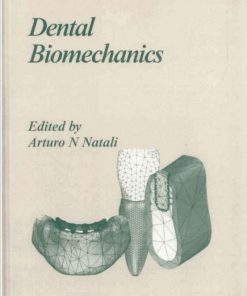Computational Modelling of Concrete Structures 1st Edition by CRC Press ISBN 1439859574 9781439859575
$50.00 Original price was: $50.00.$25.00Current price is: $25.00.
Authors:Bic´anic´, N. , Tags:CRC Press , Author sort:Bic´anic´, N. , Ids:9780415584791 , Languages:Languages:eng , Published:Published:Jan 2012 , Comments:Comments:CRC Press
Computational Modelling of Concrete Structures 1st Edition by CRC Press – Ebook PDF Instant Download/Delivery. 1439859574, 9781439859575
Full download Computational Modelling of Concrete Structures 1st Edition after payment
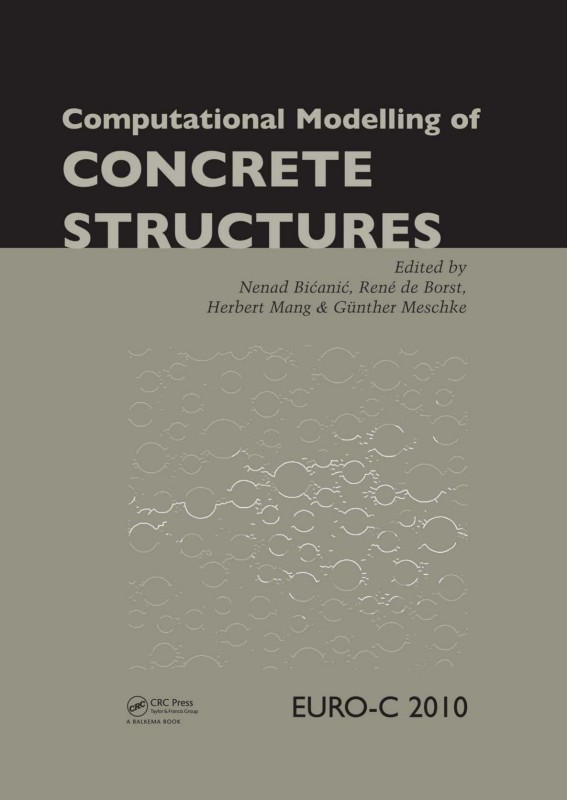
Product details:
ISBN 10: 1439859574
ISBN 13: 9781439859575
Author: CRC Press
Since 1984 the EURO-C conference series (Split 1984, Zell am See 1990, Innsbruck 1994, Badgastein 1998, St Johann im Pongau 2003, Mayrhofen 2006, Schladming 2010) has provided a forum for academic discussion of the latest theoretical, algorithmic and modelling developments associated with computational simulations of concrete and concrete structure.
Computational Modelling of Concrete Structures 1st Table of contents:
Modeling of Concrete Creep and Hygrothermal Deformations, and Computation of their Structural Effects
Alternate Approaches to Simulating the Performance of Ductile Fiber-Reinforced Cement-Based Materials in Structural Applications
Recent Developments on Computational Modeling of Material Failure in Plain and Reinforced Concrete Structures
Concrete Under Various Loadings, Way to Model in a Same Framework: Damage, Fracture and Compaction
Upscaling Quasi-Brittle Strength of Cement-Based Materials: A Continuum Micromechanics Approach
C-Crete: From Atoms to Concrete Structures
Constitutive and Multi-scale Modelling
Pull-Out Behaviour of a Glass Multi-Filaments Yarn Embedded in a Cementitious Matrix
How to Enforce Non-Negative Energy Dissipation in Microplane and Other Constitutive Models for Softening Damage, Plasticity and Friction
A Multiscale Approach for Nonlinear Hysteretic Damage Behaviour of Quasi-Brittle Disordered Materials
Modeling of Reinforced Cementitious Composites Using the Microplane Damage Model in Combination with the Stochastic Cracking Theory
A Statistical Model for Reinforced Concrete Bond Prediction
Introduction of an Internal Time in Nonlocal Integral Theories
Elastoplastic Constitutive Model for Concretes of Arbitrary Strength Properties
Properties of Concrete: A Two Step Homogenization Approach
Stress State Influence on Nonlocal Interactions in Damage Modelling
A Model for the Uniaxial Tensile Behaviour of Textile Reinforced Concrete with a Stochastic Description of the Concrete Material Properties
Multi-Axial Modeling of Plain Concrete Structures Based on an Anisotropic Damage Formulation
Determination of Cement Paste Mechanical Properties: Comparison Between Micromechanical and Ultrasound Results
The Simulation of Microcracking and Micro-Contact in a Constitutive Model for Concrete
Simulations of Dynamic Failure in Plain and Reinforced Concrete with Regularized Plasticity and Damage Models
Micromechanical Approach to Viscoelastic Properties of Fiber Reinforced Concrete
Boundary and Evolving Boundary Effects in Non Local Damage Models
Homogenization-Based Model for Reinforced Concrete
Development of Constitutive Model of Shear Stress Transfer on Concrete Crack Surface Considering Shear Stress Softening
Microplane Approach for Modeling of Concrete Under Low Confinement
Meso- and Macroscopic Models for Fiber-Reinforced Concrete
Gradient Damage Model with Volumetric-Deviatoric Split
Advances in Numerical Methods
Continuous and Discontinuous Modeling of Cracks in Concrete Elements
Topological Search of the Crack Path from a Damage-Type Mechanical Computation
On the Uniqueness of Numerical Solutions of Shear Failure of Deep Concrete Beams: Comparison of Smeared and Discrete Crack Approaches
Lattice Discrete Particle Model for Fiber Reinforced Concrete (Ldpm-F) with Application to the Numerical Simulation of Armoring Systems
Nonlocal Damage Based Failure Models, Extraction of Crack Opening and Transition to Fracture
Convergence Aspects of the Extended Finite Element Method Applied to Linear Elastic Fracture Mechanics
Applicability of Xfem for the Representation of Crack Bridge State in Planar Composite Elements
Localization Properties of Damage Models
Numerical Multiscale Solution Strategy for Fracturing of Concrete
A 3D Lattice Model to Describe Fracture Process in Fibrous Concrete
Limit Analysis of 3D Reinforced Concrete Frames
The Role of Domain Decomposition Techniques for the Study of Heterogeneous Quasi-Brittle Materials
Modelling Cohesive Crack Growth Applying Xfem with Crack Geometry Parameters
Strong Discontinuities, Mixed Finite Element Formulations and Localized Strain Injection, in Fracture Modeling of Quasi-Brittle Materials
Model for the Analysis of Structural Concrete Elements Under Plane Stress Conditions: Finite Element Implementation
A Partition of Unity Finite Element Method for Fibre Reinforced Concrete
A Discrete Cracking Model for Sequentially Linear Analysis
Relations Between Structure Size, Mesh Density, and Elemental Strength of Lattice Models
Time-Dependent and Multi Physics Phenomena
Prediction of the Permeability of Damaged Concrete Using a Combined Lattice Beam-Crack Network Approach
Modelling the Cao Hydration in Expansive Concrete
A Two-Scale Approach for Fluid Flow in Fracturing Porous Media
A Probabilistic Approach for Modelling Long-Term Behaviour and Creep Failure of a Concrete Structure Subjected to Calcium Leaching
A Coupled Transport-Crystallization FE Model for Porous Media
A Numerical Model for Early Age Concrete Behavior
Hygro-Mechanical Model for Concrete Specimens at the Meso-Level: Application to Drying Shrinkage
Comparison of Approaches for Simulating Moisture Content Changes in Concrete
Modeling of Chloride and Co2 transport in intact and cracked concrete in the context of corrosion predictions of RC structures
Thermal Activation of Basic Creep for HPC in the Range 20°C–80°C
Modelling of the THM Behaviour of Concrete at the Macroscopic and Mesoscopic Scale
Application of Enhanced Elasto-Plastic Damage Models to Concrete Under Quasi-Static and Dynamic Cyclic Loading
Propagation of Cracks and Damage in Non Ageing Linear Viscoelastic Media
Micromechanical Modelling of Concrete
3D Finite Element Analysis of Concrete Under Impact Load
Investigation Into the Form of the Load-Induced Thermal Strain Model
Development of Service Life Model Chlodif++
Modelling of Concrete Structures
Some Remarks Concerning the Shear Failure in Prestressed RC Beams
Verification of Experimental Tests on Roller Bearings by Means of Numerical Simulations
Numerical Crack Modelling of Tied Concrete Columns
Numerical Study of a Massive Reinforced Concrete Structure at Early Age: Prediction of the Cracking Risk of a Massive Wall
Numerical Modelling of Failure Mechanisms and Redistribution Effects in Steel Fibre Reinforced Concrete Slabs
Transverse Rebar Affecting Crack Behaviors of R.C. Members Subjected to Bending
A Numerical Method for RC-Boxgirders Under Combined Shear Bending and Torsion
Computation of Optimal Concrete Reinforcement in Three Dimensions
Sequentially Linear Modelling of Local Snap-Back in Extremely Brittle Structures
Simulation of Masonry Beams Retrofitted with Engineered Cementitious Composites
Setting and Loading Process Simulation of Push-In Anchor for Concrete
Nonlinear FE Modelling of Shear Behaviour in RC Beam Retrofitted with CFRP
Material Optimization for Textile Reinforced Concrete Applying a Damage Formulation
A Multifibre Approach to Describe the Ultimate Behaviour of Corroded Reinforced Concrete Structures
Simulation of Shear Load Behavior of Fifty Year Old Post-Tensioned Concrete Bridge Girders
Multi-Scale Modelling of Concrete Beams Subjected to Three-Point Bending
Experimental and Numerical Analysis of Reinforced Concrete Corbels Strengthened with Fiber Reinforced Polymers
Computational Modeling of the Behaviour up to Failure of Innovative Prebended Steel-Vhpc Beams for Railway Bridges
Numerical Investigations of Size Effects in Notched and Un-Notched Concrete Beams Under Bending
FE Modeling and Fiber Modeling for RC Column Failing in Shear After Flexural Yielding
Numerical Simulation and Experimental Testing of a New Bridge Strengthening Method
Failure Studies on Masonry Infill Walls: Experimental and Computational Observations
Numerical Study on Mixed-Mode Fracture in LRC Beams
Hazards, Risk and Safety (Fire, Blast, Seismicity)
Numerical Investigation of Damage and Spalling in Concrete Exposed to Fire
Numerical Simulation of Slender Structures with Integrated Dampers
Textile Reinforced Concrete Sandwich Panels: Bending Tests and Numerical Analyses
Structural Behavior of Tunnels Under Fire Loading Including Spalling and Load Induced Thermal Strains
Numerical Assessment of the Failure Mode of RC Columns Subjected to Fire
Ultimate Load Analysis of a Reactor Safety Containment Structure
People also search for Computational Modelling of Concrete Structures 1st:
computational modelling of concrete structures
what is computational modeling
computational modeling techniques
computational modelling of concrete and concrete structures
concrete modeling

